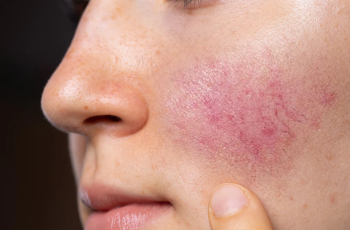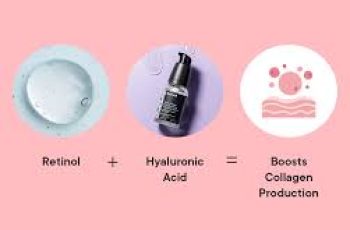
What Is Scar Revision?
Scar revision is a general term used for methods that help improve or reduce the appearance of scars on your skin. When your body heals from an injury, it forms fibrous tissue known as a scar.
Scar revision works to make these scars less visible or more aesthetically pleasing.
There are many different scar revision techniques. Sometimes, doctors use a combination of treatments to get the best results.
The choice of treatment depends on the type and size of your scar, how severe it is, your skin type, and what results you want.
Common Types of Scar Revision Procedures
Here are some of the most common scar revision methods doctors use:
1. Scar Excision
This is a surgical method where the doctor cuts out the old scar and stitches the skin back together. It’s often used for scars that are raised, wide, or irregular.
2. Skin Graft
In this procedure, the surgeon removes the scar and covers the area with healthy skin taken from another part of your body. This is useful when there is a large scar or skin loss.
3. Skin Flap
Similar to a skin graft, but the transferred skin still keeps its own blood supply. This method helps the skin survive better after being moved to cover the scar.
4. Z-Plasty
This technique involves making a Z-shaped cut across the scar and some healthy skin. The skin flaps created are moved to reposition the scar so it’s less noticeable or changes direction along natural skin lines.
5. Surface Treatments
These treatments smooth the skin’s surface and improve color. Examples include laser resurfacing, dermabrasion (which sands the skin), light therapy, chemical peels, and bleaching agents.
6. Tissue Expansion
Doctors insert an inflatable balloon under the skin near the scar. Over time, the balloon is filled with fluid to stretch the skin, causing your body to grow extra skin. This new skin can then cover the scarred area.
7. Cryotherapy
This method freezes the scar tissue with extreme cold, helping to reduce its size and thickness.
8. Injectables
Steroids or fillers (natural or synthetic) can be injected directly into scars. Steroids help flatten raised scars, while fillers can lift sunken or depressed scars.
9. Pressure Therapy
Wearing a pressure garment or bandage on the scar applies continuous pressure. This can reduce the thickness of some scars, especially hypertrophic scars and keloids.
In addition to these, doctors may also recommend topical creams, gels, or silicone sheets to help scars heal smoother after surgery or treatments.
Why Would You Need Scar Revision?
People choose scar revision to improve how a scar looks or feels. Scars can form after:
Burns
Surgery
Accidents
Illnesses
Acne or other skin conditions
Scars differ in shape, size, color, and texture. Here are common scar types you might want treated:
Hypertrophic Scars
These are raised, thick scars that are usually red but can be lighter or darker than your skin. They stay within the boundaries of the original wound.
Keloids
Keloids are thick, raised scars that often grow beyond the injury’s edges. They can itch, be painful, and are common on the face, chest, ears, neck, and shoulders.
Contractures
These scars cause skin tightening and can limit movement, especially after burns.
Stretch Marks
When skin stretches or shrinks quickly, connective tissues break down, causing stretch marks. They often appear on the breasts, thighs, stomach, or arms.
Atrophic Scars
These are sunken scars that look like small dents in the skin. Acne and chickenpox often cause these scars.
Flat Scars
These scars are usually pink or red and flatten over time as they heal.
Who Is a Good Candidate for Scar Revision?
Good candidates for scar revision are generally healthy, do not smoke, have no active skin infections or diseases, and have realistic expectations about the results.
Your doctor will evaluate your overall health and the scar before recommending treatment.
How Is Scar Revision Performed?
The way your scar revision is done depends on the scar and your goals. Here are some common approaches:
For surgical options, the doctor might cut out the scar and carefully close the skin to make a less visible scar.
Z-plasty can reposition scars to hide them better or follow natural skin creases.
Skin grafts or flaps replace scarred skin with healthier skin from other parts of your body.
Tissue expansion slowly grows new skin near the scar to replace damaged tissue.
Surface treatments like lasers, chemical peels, and dermabrasion smooth the skin and improve color.
Injectables can fill in sunken scars or reduce raised scars.
Cryotherapy freezes and reduces the size of scars.
Pressure therapy compresses the scar to prevent it from thickening.
How to Prepare for Scar Revision
Your doctor will give specific instructions before your procedure. Common preparation steps include:
Waiting until your scar has fully matured (usually 6-12 months after injury).
Telling your doctor about all medications, supplements, allergies, and health conditions.
Stopping certain medications or smoking before surgery.
Possibly fasting before anesthesia.
Avoiding lotions, creams, or makeup on the treatment area on the day of the procedure.
It’s helpful to ask your doctor to show you before and after photos of patients with similar scars so you can set realistic expectations.
What Are the Risks of Scar Revision?
Every scar revision method carries some risks. These include:
Bleeding or bruising
Infection
Reactions to anesthesia
Blood clots or heart complications
Poor wound healing or widened scars
Formation of new keloids
Skin discoloration or swelling
Numbness or persistent pain
Uneven or poor cosmetic results
Your doctor will discuss all these risks before you decide to proceed.
What to Expect During Scar Revision
If surgery is involved, you may receive:
Local anesthesia (numbing only the treatment area)
Intravenous sedation (a relaxed, sleepy state)
General anesthesia (you are fully asleep)
For non-surgical treatments like lasers or chemical peels, you might feel warmth, tingling, or mild discomfort. Doctors may use numbing creams or sedatives to ease these sensations.
Complications and Side Effects After Scar Revision
You might experience redness, swelling, or mild pain around the treated area for one to two weeks. Some complications need immediate attention, such as:
Chest pain or difficulty breathing
Irregular heartbeat
High fever or signs of infection
Severe or persistent pain and swelling
Always contact your doctor if you notice these symptoms or if healing doesn’t progress as expected.
Caring for Your Skin After Scar Revision
Healing time varies based on your procedure. Here’s what to expect:
Follow all wound care instructions carefully.
Stitches on the face are often removed after 3-4 days; other areas may take 5-7 days.
You may need to wear a light dressing or compression garment.
Avoid strenuous activities or stretching the scarred area until your doctor clears you.
Protect your scar from sun exposure with sunscreen or clothing.
Final results can take weeks or months to appear, so patience is important.
Will You Need More Than One Procedure?
Sometimes, one scar revision treatment is enough. However, many people require multiple treatments or a combination of therapies to achieve the best possible results.
Your doctor will create a personalized plan based on your needs.
Summary
Scar revision includes a wide range of treatments designed to improve the look and feel of scars.
Whether through surgery, skin grafts, lasers, injections, or pressure therapy, there are many ways to address scars caused by injury, surgery, or skin conditions.
Good candidates are healthy, realistic about outcomes, and ready to follow pre- and post-treatment care. While scar revision carries some risks, working closely with your doctor helps ensure the best results.
If you’re unhappy with a scar, talk to a dermatologist or plastic surgeon about your options. Modern treatments can make a big difference, helping your skin look smoother, healthier, and closer to normal.


